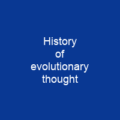Zoology studies the structure, embryology, evolution, classification, habits, and distribution of all animals, both living and extinct. Evolutionary research is concerned with origin and descent of species, as well as their change over time. Anatomy considers the forms of macroscopic structures such as organs and organ systems. Physiology studies the mechanical, physical, and biochemical processes of living organisms.
About Zoology in brief

The term is derived from Ancient Greek ζῷον, zōion, i. e. ‘animal’, and logos, ‘knowledge, study’. The concept of zoological sciences emerged from natural history reaching back to the biological works of Aristotle and Galen in the ancient Greco-Roman world. In 1859, Darwin placed the theory of organic evolution on a new footing, by his discovery of a process by which organic evolution can occur, and provided observational evidence that it had done so. In the early 20th century, the rediscovery of Mendel’s work led to the rapid development of genetics, and by the 1930s the combination of population genetics and natural selection in the modern synthesis created evolutionary biology. For. example, what is learned about the physiology of yeast cells can also apply to human physiology.
You want to know more about Zoology?
This page is based on the article Zoology published in Wikipedia (as of Nov. 08, 2020) and was automatically summarized using artificial intelligence.







